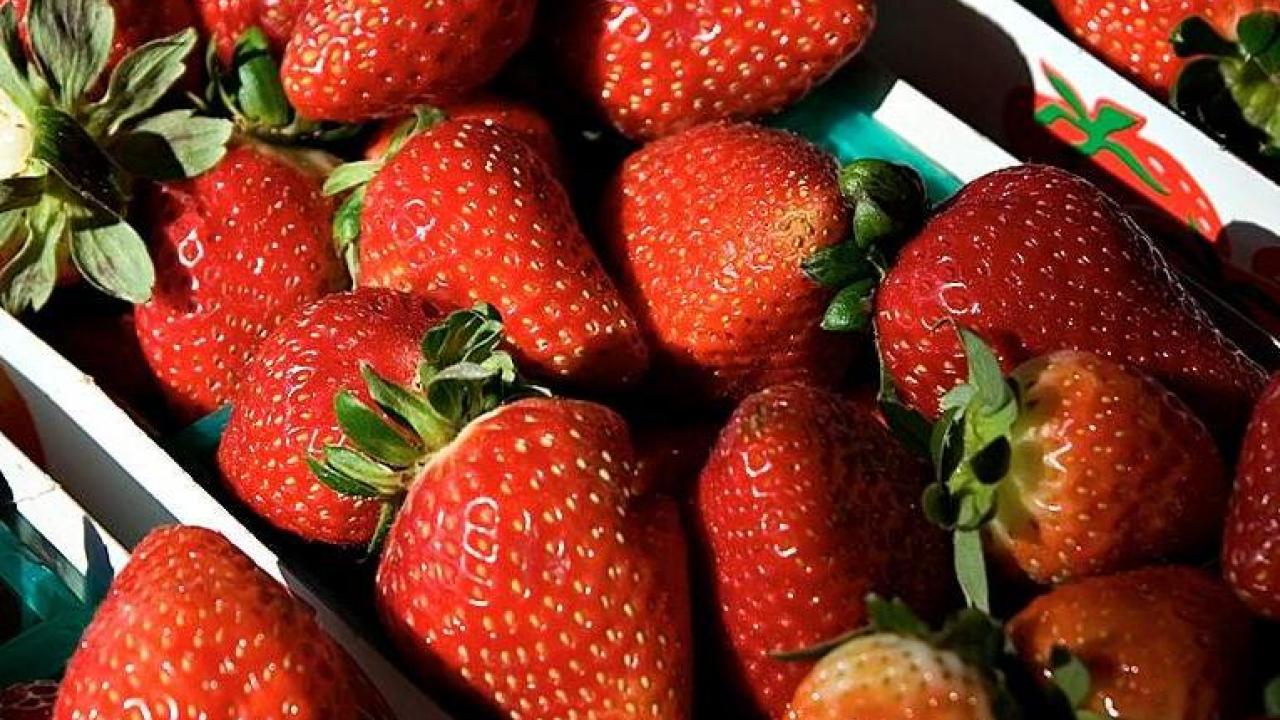
Strawberry fields: Campus, commission working it out
Year-round fruit after decades of UC Davis research. Legal issues resolution.
University of California, Davis
May 20, 2014
There was a time when California’s strawberry season lasted for just a few brief, delicious weeks in May and then disappeared as the summer heat rolled in.
Today, thanks to more than six decades of research by three generations of UC Davis breeders, fresh strawberries are being harvested somewhere in California every month of the year, and the state is the dominant producer of both fresh and processed strawberries, providing more than 80 percent of the strawberries consumed in North America.
Despite these successes, strawberry season this year finds UC Davis and the California Strawberry Commission, one of the university’s longtime supporters, tangled in legal issues.
The commission has for three decades partnered with the university breeding program and served as a valuable conduit, communicating the needs of growers to university researchers.
As one generation of campus strawberry breeders prepares to pass the torch to another, the commission in October 2013 filed a lawsuit against the university, expressing concern that the campus would end its breeding program.
In April 2014, the university responded by asking the court to dismiss the lawsuit.
“UC Davis is committed to a long-term, positive relationship with the Strawberry Commission, for the benefit of California strawberry growers and the public,” said Helene Dillard, dean of the College of Agricultural and Environmental Sciences. “We are eager to resolve the legal issues and move on to address the many challenges facing the strawberry industry.”
She noted that the college has begun the recruitment process for a new breeder and plant geneticist to join the strawberry program.
To further demonstrate its commitment to maintaining a strong, secure breeding program, the college has made sure that it has two copies of the strawberry plant collection — one for use by the breeders and one to serve as a backup. Each contains patented varieties, advanced selection lines, breeding stock and historical plants.
Meanwhile, campus leaders continue to meet regularly with members of the Strawberry Commission, in the hope of resolving the issues at hand and moving forward into a new era of collaboration and productive research.
Decades of achievements
UC Davis’ successes in strawberry research are legendary. Average strawberry yields have grown from 6 tons per acre in the 1950s to 30 tons per acre today, and the berries grown today on California farms are tastier, longer lasting, and more resistant to pests and disease.
Campus research also has led to significant improvements in production systems such as raised beds, plastic mulch and drip irrigation, now used on strawberry farms around the world.
UC Davis’ Foundation Plant Services screens the most successful varieties to make sure they are healthy, and propagates them for sale to agricultural nurseries, which, in turn, sell the strawberry plants to growers.
The breeding program has resulted in more than 30 patented strawberry varieties, for commercial licensing. During the last 10 years, the strawberry licensing revenue distributed annually to UC Davis ranged from $1.8 million to $4.5 million, providing support for the breeding program and educational activities.
Despite the successes of the strawberry breeding program and the California strawberry industry, significant challenges await those who will take the program and the industry into a new era. These include an increasingly competitive global economy, rising production costs, regulatory issues, and decreasing availability of both farmland and water.
(Article by Patricia Bailey, UC Davis Dateline, May 6, 2014, UC Davis News Service.)
Media contact:
· Pat Bailey, UC Davis News Service, pjbailey@ucdavis.edu
College of Agricultural and Environmental Sciences, UC Davis, contact:
· Ann Filmer, Senior Director of Communications, 530-754-6788,afilmer@ucdavis.edu